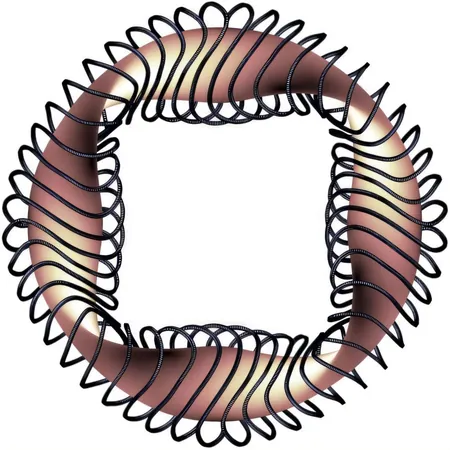
Breakthrough in Magnetic Field Optimization Could Revolutionize Fusion Reactor Design
2024-11-15
Author: Ying
Introduction
Physicists have long been on a mission to harness the power of nuclear fusion as a means of generating energy. For decades, the success of fusion reactors has hinged on the effective confinement of charged particles through magnetic fields, which plays a critical role in managing high-energy plasma. Now, researchers from the Laboratorio Nacional de Fusión–CIEMAT in Madrid have made a groundbreaking discovery that could significantly improve this confinement process.
Novel Magnetic Fields
In their recent publication in Physical Review Letters, the team introduced a novel family of magnetic fields that promise enhanced particle confinement in fusion reactors without the need for complicated setups. "In recent years, many initiatives have sprung up around the design and construction of experimental fusion devices and reactor prototypes," explained José Luis Velasco, the study's lead author.
Omnigenous vs. Alternative Configurations
While the fusion community has often gravitated towards creating "omnigenous" magnetic fields—fields that maintain consistent properties with respect to a wide range of particle trajectories—Velasco and his team have explored alternative configurations. Their research suggests that there are magnetic fields that diverge from omnigenous characteristics yet still demonstrate effective plasma confinement, citing examples such as the Large Helical Device in Japan.
Stellarator Reactors
Understanding that less conventional magnetic fields could hold significant insights for stellarator reactor design, the researchers ventured into this relatively uncharted territory. In stellarators, electric currents flowing through coils generate a complex magnetic field that forms nested surfaces reminiscent of a twisted doughnut, crucial for confining the fusion plasma, which mainly consists of isotopes like deuterium and tritium.
Optimizing Magnetic Fields
To achieve the high temperatures necessary for fusion reactions to yield electricity, optimizing these magnetic fields is not just essential but a science of its own. “While it may seem that making the magnetic field omnigenous is optimal, our findings reveal that similar confinement can be achieved by breaking down the magnetic surfaces into smaller segments—a method we refer to as ‘piecewise omnigenous,’" Velasco stated.
Implications of the Research
This fresh approach may allow physicists to design magnetic fields more efficiently. Unlike traditional methods that might require costly and complex coils, the piecewise strategy could open the door to simpler and potentially less expensive configurations. Velasco pointed out the National Compact Stellarator Experiment as an example where intricate designs complicated the project.
Future Research Directions
The promise of this research extends beyond theoretical frameworks; it could reshape the entire landscape of fusion reactor design by expanding the array of feasible configurations. As they move forward, Velasco and his team plan to dive deeper into the practical physics surrounding their newly discovered fields to assess their competitive viability against established omnigenous designs.
Key Questions Ahead
Key questions remain, however: Will these new configurations effectively reduce energy loss due to turbulence, and how can coil design be optimized to meet reactor demands? Addressing these queries will necessitate a collaborative effort drawing on expertise across various scientific disciplines at CIEMAT and international partners.
Conclusion
As the world searches for sustainable energy sources, this innovative research offers a glimmer of hope. Could we be on the brink of a fusion energy revolution? Stay tuned as these scientists continue their quest to unlock the secrets of fusion energy!



 Brasil (PT)
Brasil (PT)
 Canada (EN)
Canada (EN)
 Chile (ES)
Chile (ES)
 España (ES)
España (ES)
 France (FR)
France (FR)
 Hong Kong (EN)
Hong Kong (EN)
 Italia (IT)
Italia (IT)
 日本 (JA)
日本 (JA)
 Magyarország (HU)
Magyarország (HU)
 Norge (NO)
Norge (NO)
 Polska (PL)
Polska (PL)
 Schweiz (DE)
Schweiz (DE)
 Singapore (EN)
Singapore (EN)
 Sverige (SV)
Sverige (SV)
 Suomi (FI)
Suomi (FI)
 Türkiye (TR)
Türkiye (TR)